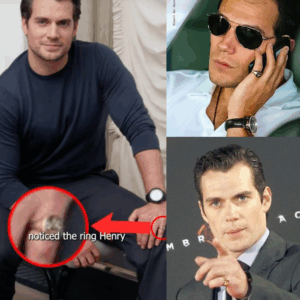On July 14, 2025, U.S. President Donald Trump delivered a bold and unexpected ultimatum to Russian President Vladimir Putin during a White House meeting with NATO Secretary General Mark Rutte. Trump announced that the United States would impose 100% secondary tariffs on Russia and its trading partners if a peace deal to end the war in Ukraine is not reached within 50 days. This dramatic escalation, coupled with Trump’s commitment to supply Ukraine with advanced weaponry, including Patriot missile systems, through NATO, marks a significant shift in U.S. foreign policy and signals growing frustration with Russia’s ongoing aggression. The announcement has sparked intense debate, with reactions ranging from cautious optimism in Ukraine to skepticism about the feasibility of the deadline. This article explores the context of Trump’s ultimatum, the details of his plan, and the potential implications for the Ukraine-Russia conflict and global geopolitics.
Background: A Shifting Stance on Ukraine
Since Russia’s invasion of Ukraine in February 2022, the conflict has been a defining challenge for international relations, drawing significant military and financial support from Western nations, particularly the United States. During his 2024 presidential campaign, Trump promised to broker a swift peace deal, leveraging his self-proclaimed rapport with Putin. He famously claimed he could resolve the war “in one day” by negotiating directly with both sides. However, since taking office in January 2025, Trump’s approach has evolved, reflecting frustration with Putin’s apparent unwillingness to engage in meaningful negotiations.
Trump’s latest move comes after months of stalled diplomacy. In April 2025, at the funeral of Pope Francis, Trump expressed doubts about Putin’s sincerity, noting Russia’s continued bombardment of Ukrainian civilian targets despite diplomatic overtures. By July, his tone had hardened, with Trump publicly criticizing Putin for “talking nice” during phone calls only to launch missile strikes on Kyiv hours later. This frustration culminated in the July 14 announcement, where Trump, flanked by Vice President JD Vance, Secretary of State Marco Rubio, and Defense Secretary Pete Hegseth, laid out a dual strategy of economic pressure and military support to force Russia to the negotiating table.
The Ultimatum: 100% Secondary Tariffs
Trump’s threat to impose 100% secondary tariffs targets not only Russia but also countries that continue to trade with Moscow, particularly those purchasing Russian oil and gas, such as China, India, and Brazil. Secondary tariffs, as explained by Trump, would penalize nations that maintain economic ties with Russia by imposing steep levies on their exports to the U.S. This approach aims to isolate Russia economically, leveraging America’s significant market power to deter trade with Moscow. During the White House meeting, Trump stated, “We’re going to be doing very severe tariffs if we don’t have a deal in 50 days, tariffs at about 100%,” describing them as “secondary tariffs” to hurt Russia indirectly through its trading partners.
The 50-day deadline, set to expire around September 2, 2025—a date symbolically tied to the end of World War II—adds urgency to the ultimatum. Trump’s choice of this timeline reflects his desire for a rapid resolution, but it also raises questions about enforcement. The U.S. has limited direct trade with Russia, making secondary tariffs a strategic tool to pressure countries reliant on both Russian resources and U.S. markets. For instance, China, a major importer of Russian fossil fuels, could face significant economic disruption if the tariffs are implemented.
However, the Kremlin has downplayed the threat. Spokesman Dmitry Peskov described Trump’s rhetoric as “harsh” but expressed confidence that Moscow could navigate the 50-day period, potentially using the time to propose counteroffers or escalate military actions. Some Russian nationalists, as reported by NPR, view the deadline as an opportunity to push for battlefield gains, believing that territorial advances could strengthen Moscow’s negotiating position.
Military Support: Arming Ukraine via NATO
In tandem with the tariff threat, Trump announced a deal to supply Ukraine with “top-of-the-line” weapons, including Patriot missile defense systems, through NATO. The arrangement, described as a financial win for the U.S., involves NATO allies purchasing American-made weapons, such as Patriot missiles and howitzer ammunition, which will then be transferred to Ukraine. European nations, including Germany, Finland, and the Netherlands, will fund the transfers, with some countries sending existing stockpiles to Kyiv while replenishing their arsenals with U.S. supplies. Trump emphasized that the U.S. would not bear the cost, stating, “They are going to pay us 100 percent for that, and that’s the way we want it.”
The inclusion of Patriot missiles is particularly significant, as Ukraine has repeatedly cited these systems as critical for defending against Russia’s long-range missile and drone attacks. Trump confirmed that at least 17 Patriot systems are ready for shipment, with some expected to arrive in Ukraine within days or weeks. This move reverses a controversial pause in U.S. weapons shipments ordered by Defense Secretary Hegseth earlier in July, which had caused friction within the administration. When asked about the pause, Trump deflected, saying, “I don’t know, why don’t you tell me?”
Ukrainian President Volodymyr Zelenskyy welcomed the announcement, expressing gratitude in a video address and describing a “productive” discussion with Trump’s special envoy, Keith Kellogg. Zelenskyy noted that the weapons would bolster Ukraine’s defenses and strengthen its position in potential negotiations. However, Ukrainian parliament member Solomiia Bobrovska voiced concerns that Russia might escalate attacks in the next 50 days to seize more territory before any ceasefire talks, potentially altering the front lines to Moscow’s advantage.
Reactions and Skepticism
The announcement has elicited mixed reactions globally. NATO Secretary General Mark Rutte praised Trump’s commitment, noting that it reflects a unified Western effort to support Ukraine. Rutte urged Putin to take the negotiations seriously, stating, “If I were Putin, I would reconsider whether I should not take negotiations about Ukraine more seriously.” European allies, particularly Germany, have moved quickly to coordinate, with German Defense Minister Boris Pistorius discussing the purchase of additional U.S.-made missiles to facilitate transfers to Ukraine.
On X, sentiment ranges from support to skepticism. Users like @WIONews and @TimesNow highlighted the ultimatum and arms deal as a bold move, while @Heroiam_Slava expressed frustration, noting that previous ultimatums have failed to yield results. Others, like @rshereme, pointed out the symbolic weight of the September 2 deadline but questioned its practicality. In Moscow, Kremlin-aligned commentators, such as Konstantin Kosachev, suggested that 50 days is ample time for Russia to maneuver, potentially undermining the ultimatum’s impact.
Critics have also raised doubts about Trump’s consistency. His initial reluctance to arm Ukraine, coupled with the brief pause in shipments, has led some to question whether this policy shift is a genuine commitment or a tactical maneuver to pressure both Russia and Ukraine. Trump’s non-interventionist base, which has embraced his “America First” rhetoric, may balk at the increased military involvement, as seen in reactions to his earlier strikes on Iran.
Implications for the Ukraine-Russia Conflict
Trump’s ultimatum represents a high-stakes gamble. If successful, it could force Russia to negotiate, potentially leading to a ceasefire and saving countless lives. The threat of 100% tariffs could pressure countries like China and India to reduce trade with Russia, squeezing Moscow’s economy, which relies heavily on energy exports. The influx of advanced weapons, particularly Patriot systems, could also shift the battlefield dynamics, giving Ukraine a stronger defensive posture and possibly deterring Russian escalation.
However, the 50-day timeline poses risks. Russia could use the period to intensify attacks, as Bobrovska warned, aiming to capture more territory before negotiations. Previous ultimatums, such as one issued by European leaders in May 2025, fizzled when Putin offered talks in Istanbul but failed to attend, with Trump taking no action in response. This history fuels skepticism that the current threat will yield different results. Moreover, enforcing secondary tariffs could strain U.S. relations with key trading partners like India and China, complicating global economic dynamics.
Broader Geopolitical Context
Trump’s strategy reflects a broader use of trade as a geopolitical weapon, a tactic he has employed before. In March 2025, he imposed 25% tariffs on countries importing Venezuelan oil, and in May, he threatened similar levies on Iranian oil buyers. The proposed 100% tariffs on Russia’s trading partners escalate this approach, signaling a willingness to use economic leverage to achieve foreign policy goals. However, the move could alienate allies and provoke retaliatory measures, particularly from China, which has deepened economic ties with Russia since the war began.
The ultimatum also underscores tensions within NATO and the U.S. administration. The earlier pause in weapons shipments, reportedly ordered by Hegseth without Trump’s knowledge, exposed communication gaps that could undermine the policy’s execution. Meanwhile, NATO’s increased defense spending, pushed by Trump and agreed upon at the 2025 Netherlands summit, aligns with his vision of burden-sharing but adds pressure on European allies to finance Ukraine’s defense.
Looking Ahead
As the 50-day clock ticks, the world watches to see whether Trump’s ultimatum will force a breakthrough or lead to further escalation. The delivery of Patriot missiles and other weapons could bolster Ukraine’s resilience, but the success of the tariff threat hinges on Russia’s response and the willingness of its trading partners to comply. For Trump, the move is a test of his deal-making prowess and his ability to balance his “America First” base with the demands of global leadership.
For Ukraine, the stakes are existential. Zelenskyy’s optimism reflects hope that U.S. support will tip the scales, but the memory of past failed ultimatums looms large. In Russia, Putin’s next moves remain uncertain, with the Kremlin’s calm response masking potential calculations to outmaneuver the deadline. As September 2 approaches, the Ukraine-Russia conflict enters a critical phase, with Trump’s bold gamble shaping the future of the war and the global order.





